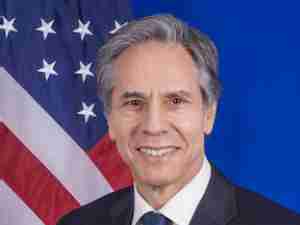In the face of the seemingly endless run of economic snags over the past year, Bank of Canada Governor Stephen Poloz has been steadfast on one thing: his belief a recovering U.S. economy will eventually fuel export sales, trigger new investment and lift Canada’s economy.
“I don’t think you should lose faith in the underlying narrative, which is the export recovery is matching what is going on in the U.S.,” Poloz told reporters at a press conference June 9. “The export story that we’ve talked about is nicely intact.”
Poloz will deliver what the Bank of Canada is calling a progress report on the country’s economy Wednesday in Whitehorse, Yukon. Here are some key economic developments that are probably testing the governor’s faith, followed by a few that may be sustaining it:
Faith Shakers
- It’s tough to ignore the scale of the recent export plunge. Since reaching a record in January, total exports are down 9.3 percent, and the drop wasn’t confined to the oil patch. Non-energy exports are also down 9.1 percent in that period. “You’ve got to start wondering what is going on with exports and will that really throw our story off track,” Jean-Francois Perrault, chief economist at Bank of Nova Scotia, said in a telephone interview.
- Canadian policy makers have predicted for years a rotation of demand away from household spending and toward exports and business investment. They’re still waiting. Without household spending, the economy wouldn’t have grown at all in 2015. The plunge in exports in the second quarter suggests this trend is nowhere near its end. “Let’s face it, the expansion is so incredibly dependent on the consumer and the housing market and the I have to say the Bank can’t be totally thrilled with that development,” Doug Porter, chief economist at Bank of Montreal, said by phone.
- While the U.S. economy is growing, the nation’s manufacturers have struggled, with industrial output down from a year earlier. That’s bad news for Canada, whose export sector relies heavily on orders from U.S. factories. “If you look at industrial production, it’s still very soft,” said Mark Chandler, head of fixed income research at RBC Economics. “The problem isn’t so much that the U.S. isn’t having a recovery, the problem is the type of recovery it is having is one that hasn’t suited Canada in the past.”
Faith Makers
- Poloz is focusing on more encouraging longer-term export trends. Even with the recent slump, non-energy exports in the first four months of 2016 are 7.2 percent above year-earlier levels.
- Most indications are the U.S. recovery is being sustained. Although last month’s employment data was spectacularly weak, it still showed the country’s jobless rate near a nine-year low of 4.7 percent, around the level considered close to full employment. Retail sales posted their best back-to-back monthly gains in more than two years, and overall, the economy is on pace for 2.4 percent annualized growth in the second quarter.
- At 1.7 percent in May, Canada’s total inflation rate is the highest in the Group of Seven. That’s an indication of economic health in a world where many policy makers are struggling to keep prices from falling.
- The capacity utilization rate in Canadian manufacturing industries rose to 83.2 percent in the first quarter—the highest since the second quarter of 2007. That may signal factories are on the cusp of investing.








